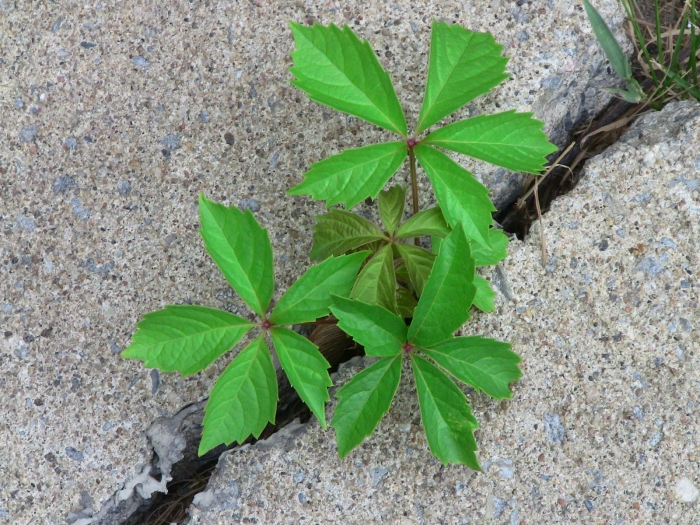Woodbine
(Parthenocissus vitacea)
Woodbine (Parthenocissus vitacea)
/
/

Yannick ST-Jacques Prescod
CC BY 4.0
Image By:
Yannick ST-Jacques Prescod
Recorded By:
Copyright:
CC BY 4.0
Copyright Notice:
Photo by: Yannick ST-Jacques Prescod | License Type: CC BY 4.0 | License URL: http://creativecommons.org/licenses/by/4.0/ | Rights Holder: Yannick ST-Jacques Prescod | Publisher: iNaturalist | Date Created: 2020-06-27T17:37:22-07:00 |














































Estimated Native Range
Summary
Parthenocissus vitacea, commonly known as Woodbine, is a deciduous perennial vine that thrives in a variety of habitats, including deciduous forests, forest edges, and riparian zones throughout the Northeastern and Intermountain regions of the United States, as well as in Mexico. It is a vigorous climber, reaching lengths of up to 20 meters by using small branched tendrils with twining tips to attach to surfaces. Woodbine is notable for its foliage which turns a brilliant red in the fall, adding seasonal interest to garden spaces. The inconspicuous greenish flowers appear in clusters in late spring and are followed by small blue-black berries that mature in late summer or early fall. These berries are attractive to birds but contain oxalates, which can be toxic if ingested, and the plant may cause dermatitis in sensitive individuals.
Woodbine is valued for its ability to cover unsightly structures, provide quick shade as a natural canopy, and for its wildlife value, as it is visited by birds and bees. It is adaptable to a range of light conditions, from full sun to full shade, and prefers soils with medium drainage. While it requires medium amounts of water, it can tolerate some drought once established. Gardeners should be aware that Parthenocissus vitacea can be potentially invasive outside its native range, and it is important to check local regulations before planting.CC BY-SA 4.0
Woodbine is valued for its ability to cover unsightly structures, provide quick shade as a natural canopy, and for its wildlife value, as it is visited by birds and bees. It is adaptable to a range of light conditions, from full sun to full shade, and prefers soils with medium drainage. While it requires medium amounts of water, it can tolerate some drought once established. Gardeners should be aware that Parthenocissus vitacea can be potentially invasive outside its native range, and it is important to check local regulations before planting.CC BY-SA 4.0
Plant Description
- Plant Type: Vine
- Height: 30-40 feet
- Width: 25-40 feet
- Growth Rate: Rapid
- Flower Color: N/A
- Flowering Season: Summer
- Leaf Retention: Deciduous
Growth Requirements
- Sun: Full Sun, Part Shade, Full Shade
- Water: Medium
- Drainage: Medium
Common Uses
Bee Garden, Bird Garden, Butterfly Garden, Groundcover, Low Maintenance, Street Planting
Natural Habitat
Deciduous forests, forest edges, and riparian zones
Other Names
Common Names: Great Woodbine , Thicket Creeper , False Virginia Creeper , Grape Woodbine , Virginia Creeper , Vigne Vierge , Vigne Vierge Commune
Scientific Names: Parthenocissus inserta , Parthenocissus vitacea , Parthenocissus inserta var. laciniata , Vitis vitacea , Parthenocissus inserens , Parthenocissus laciniata , Parthenocissus quinquefolia var. laciniata , Parthenocissus vitacea f. dubia , Ampelopsis inserta , Ampelopsis quinquefolia var. vitacea
GBIF Accepted Name: Parthenocissus vitacea (Knerr) Hitchc.